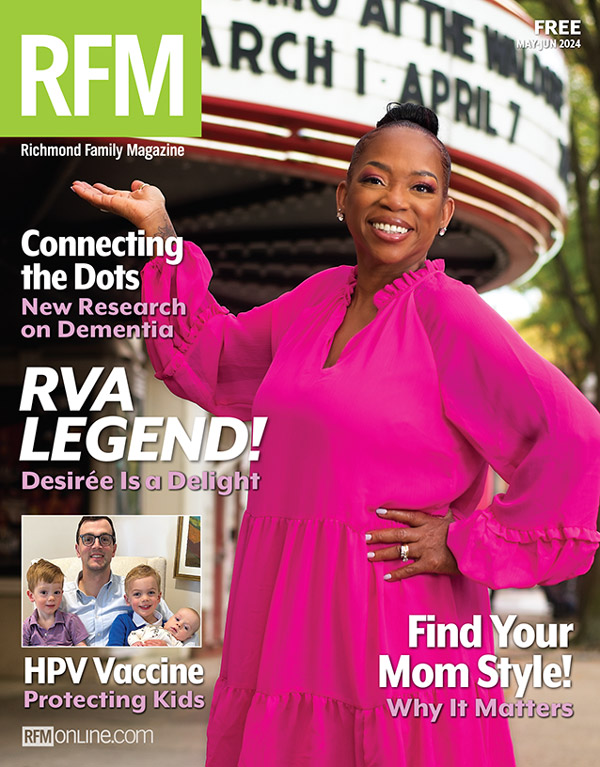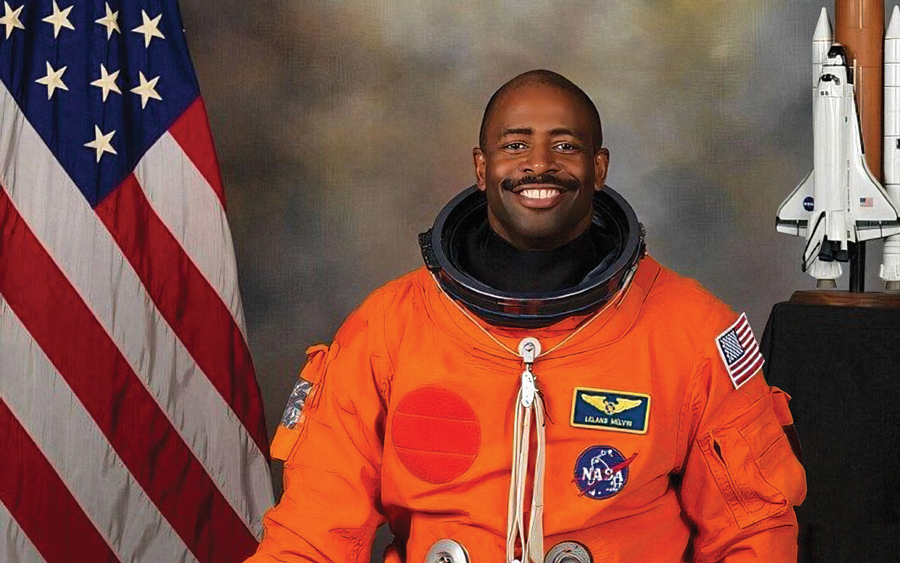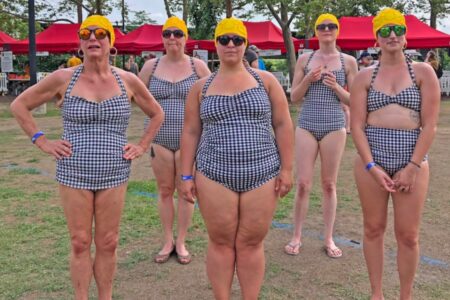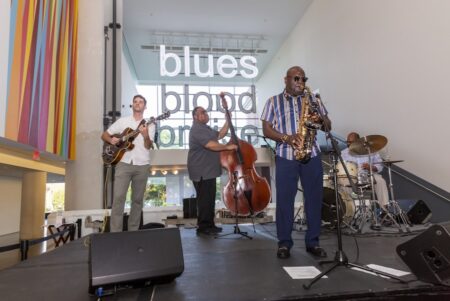Retired NASA astronaut Leland D. Melvin felt a connection to science early in life, but he never imagined he would be part of America’s space legacy.
“We are always looking up and wondering what’s up there,” says Melvin – who, to a certain extent, actually knows! – having logged more than 565 hours in space during two shuttle missions to visit the International Space Station.
This year, Melvin is serving as the signature ambassador for Apollo: When We Went to the Moon, the exhibition at the Virginia Museum of History & Culture (VMHC), which will include a year of space history programming. In fact, this summer Richmond is the place to learn more about space, thanks to space-themed exhibitions at VMHC, Science Museum of Virginia, and Children’s Museum of Richmond (CMoR).
A Lynchburg native, Melvin is no stranger to the Richmond area. He is an alum of the University of Richmond and University of Virginia. He is an engineer, author, philanthropist, public speaker, champion of STEM, and the only person drafted into the NFL to have flown in space (a hamstring injury prevented him from ever playing a game). The Pro Football Hall of Fame honored Melvin’s athletic and academic accomplishments by placing his Detroit Lions jersey under glass in Canton, Ohio.
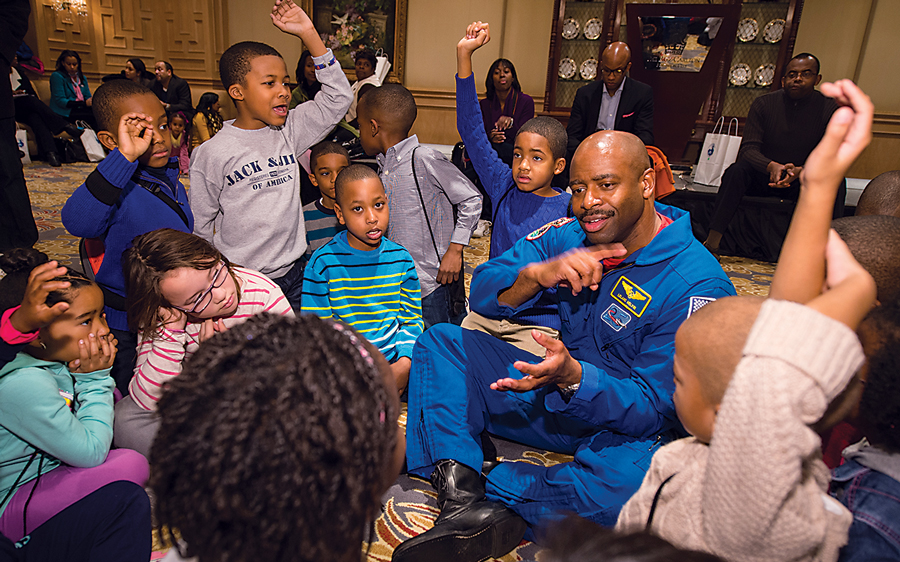
His interest in science – before catching the science bug, he idolized tennis legend Arthur Ashe – started in elementary school with a chemistry kit and a small explosion. “My eyes were so big. My brain was activated to science and chemistry,” he says, noting that hands-on experiences early in life can lead to a child’s passion.
His affinity for engineering sparked when his dad drove a bread truck into the family’s driveway and shared the plan to convert it into a camper. Melvin ended up helping his father build the camper by pitching in to rewire the truck.
“I was learning to be an engineer and didn’t know it,” he says, adding that his father wanted to take the family on trips, and the best way to accomplish that was to build a camper that was essentially a DIY Winnebago. “That was the genesis of what it meant to have a vision, solve a problem, and be cost-effective.”
That early life experience compelled Melvin to get a bachelor’s degree in chemistry (at UR) and a master’s degree in materials science engineering (at UVA). He began work at NASA’s Langley Research Center in 1989 in the area of nondestructive testing, creating optical fiber sensors for measuring damage in aerospace vehicles.
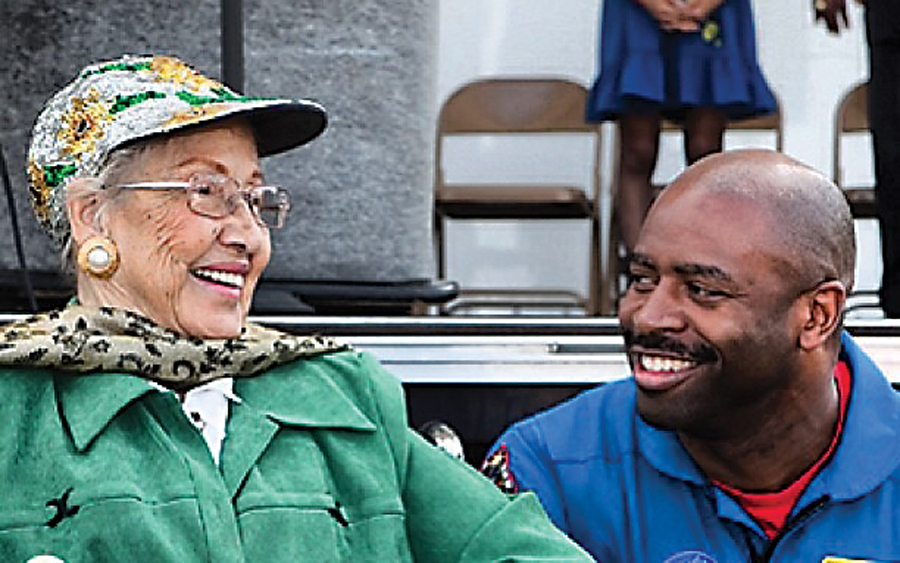
He didn’t know much about NASA’s astronaut program until some friends showed an interest. In 1998, he applied and was selected to begin astronaut candidate training with the agency.
Going into space “humbles you and gives you a different perspective,” he says. “It changes you. You see the sunrise and sunset every forty-five minutes when you go around. People who come back [from space] articulate what they felt and how they cried looking at the planets.”
When you’re in space, you are working together to not only finish a mission but also ensure that everyone stays safe. “It forces you into living and working together in harmony. It helps people have a different perspective on who we are as human beings, living on the planet as one civilization,” he says.
When NASA retired the space shuttle in 2011, interest in space and space missions seemed to dwindle, says Melvin.
“We saw headlines saying NASA space shuttle ends,” Melvin says, explaining that the wind-down of the shuttle program did not mean the end of NASA.

Now with all of the old and new players in the space race – SpaceX, Blue Origin, Virgin Galactic, and Rocket Lab – Melvin is seeing a renewed interest in space, especially from kids who want to learn more about space and space travel.
“So much is happening in space now,” he says. “Kids in south central Los Angeles are wearing NASA t-shirts they bought at Target. I was in Spain and a kid had on a NASA t-shirt. It blows my mind. We are everywhere.”
Later in the year, Melvin will join Dr. Robert Satcher (a native of Hampton) for a special program at VMHC. Melvin and Satcher flew to the International Space Station together on Atlantis in 2009 – the first shuttle mission to include two Black astronauts.
Melvin wants to see people, especially kids, learn as much as they can about the world around them and to believe in their abilities.
“I want to share the awe and wonder of space, our planet, the ocean, and the skies,” he says. “We must give kids in all zip codes access to opportunity and belief … belief in themselves that there is a mission possible for them. It starts with seeing someone who looks like them who has a profession in STEM. What you can see, you can be.”
Helping Kids Embrace Curiosity During a Summer of Space
Melvin believes it’s important for kids to be exposed to experiential learning – the kind of learning that he engaged in with his father while tinkering on that bread truck decades ago and the kind of learning children and families can explore at area museums this summer.
“There are a lot of questions you ask your mom when you look up [to the sky] that have to do with our everyday existence on Earth,” he says, adding that kids have an innate curiosity about space. “We don’t want to screen-time that out.”

Apollo: When We Went to the Moon
Virginia Museum of History & Culture
Andrew Talkov, senior director of curatorial affairs at VMHC, says now is the perfect time to learn about space with your family.
“We are talking about going back to the Moon. NASA’s Artemis project in the next few years will land us on the Moon. That’s a gateway to Mars and other deep space exploration. The Artemis missions will land the first woman and first person of color on the Moon,” says Talkov.
The younger generation that sees Apollo: When We Went to the Moon is the Artemis generation, he adds. “[Seeing the exhibit] is a good opportunity for parents and grandparents to talk with children about how important it was to land on the Moon for the first time. It will be interesting for people to experience that excitement again when we return.”
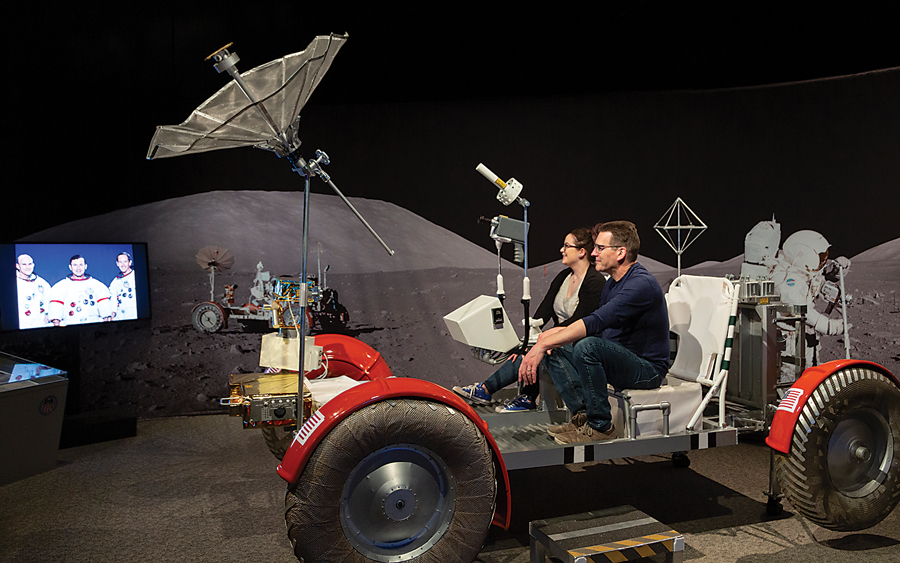
The exhibit, which opened in March and will be on display through December 31, chronicles how space exploration began as an extension of the Cold War between the U.S. and the Soviet Union and led to international cooperation both on and off Earth. According to Talkov, the exhibit is about people doing extraordinary things and demonstrating determination and ability to overcome immense challenges. “It’s about exploration. For young people, it will encourage them to explore their world and to have that curiosity,” says Talkov, who had a hand in creating a portion of the 7,000-square-foot exhibition that deals specifically with Virginia’s contributions to space.
“We have a lot of materials that the exhibit provided, but we also felt like this was an opportunity to talk about Virginia’s role in the space and aeronautics program,” he says.
Virginia is an important piece of the history of space flight through NASA’s Langley Research Center and NASA’s Wallops Flight Facility on Wallops Island, where private spaceflight company Rocket Lab launched a booster rocket into space in March.
“We worked with NASA Langley to tell the story of the origin of their facility,” Talkov says, adding that NASA’s Langley Research Center dates back to the early days of space flight when it was established in 1917 as the National Advisory Committee for Aeronautics.
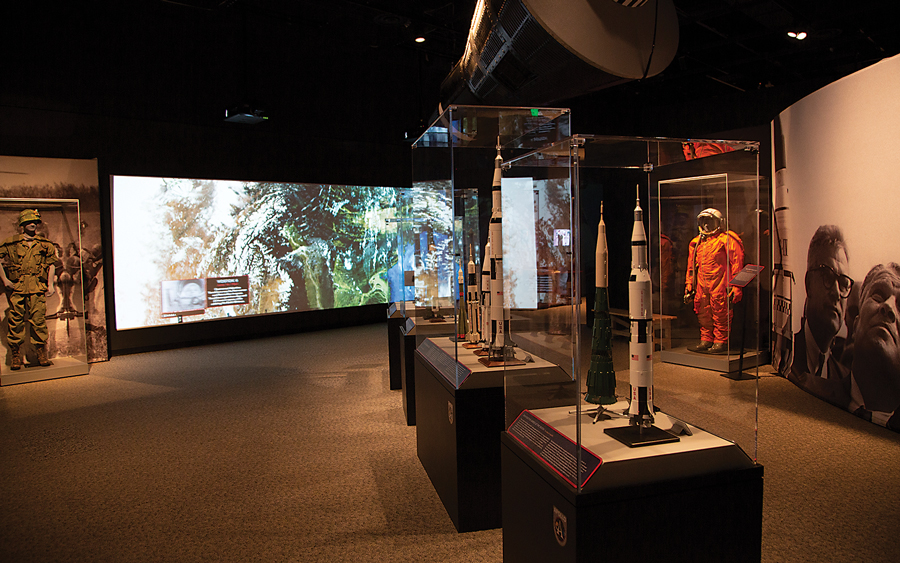
Much of the research at Langley was in preparation for the Apollo missions, including Apollo 11 which landed humans on the Moon for the first time in 1969. That research continues to be used today.
“We are still launching these capsules with rockets and still landing them in the ocean with parachutes,” says Chuck English, interim director and CEO of the Virginia Air & Space Center, which is also the NASA Langley Research Visitor Center.
Langley worked with the capsule that would take people into space. It also helped astronauts learn how to land on the Moon.
“We have here [at the Virginia Air & Space Center] the lander that astronauts used to train on how to land on the Moon. We have artifacts that have traveled around the Moon and back and research aircraft that show the evolution in aviation,” English says.
NASA Langley’s testing facility became one of the best in the world. “It’s well known for improving our flight, for going faster and higher, even before the space program,” Talkov says. “The humans in the space program started at Langley in Virginia in 1958, before the center of the space program moved to Houston.”
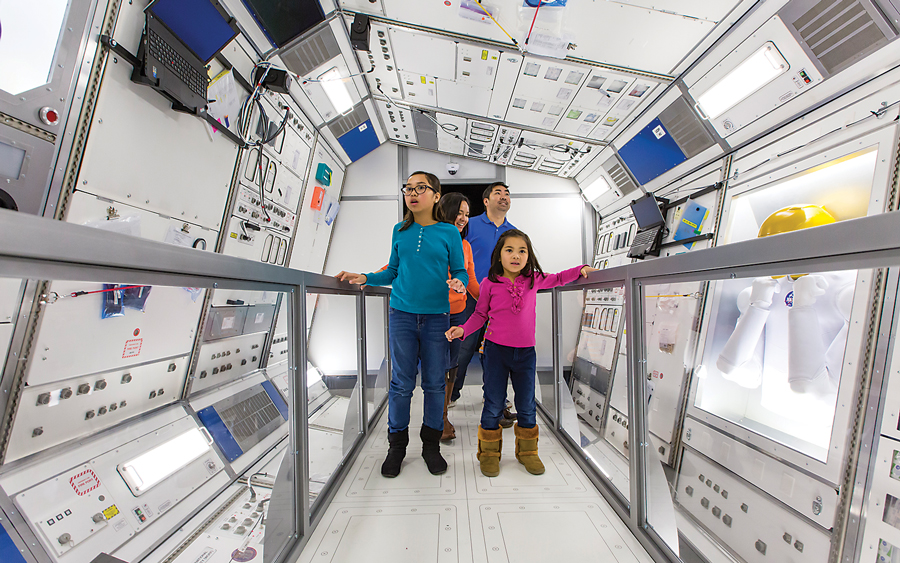
Space: An Out-of-Gravity Experience
Science Museum of Virginia
The exhibit Space: An Out-of-Gravity Experience, running May 27 through September 4 at the Science Museum, is a comprehensive look at what it takes for humans to explore outer space, from the innovation that makes life possible in space to what it’s like to be aboard the International Space Station.
“What we know about space is constantly changing,” says astronomer Justin Bartel of the Science Museum. “There are a lot of adults who have misconceptions about space. [Visiting this exhibit] is an opportunity to be a lifelong learner.”
The interactive exhibit will delve into the challenges and triumphs of space exploration as it focuses on current and future exploration, shedding light on a variety of subjects – from how people work upside down when they’re weightless, to how astronauts eat in space, to how they go to the bathroom – and yes, there is a mockup of a space toilet in the exhibit, as well as space suits and a robotic arm.
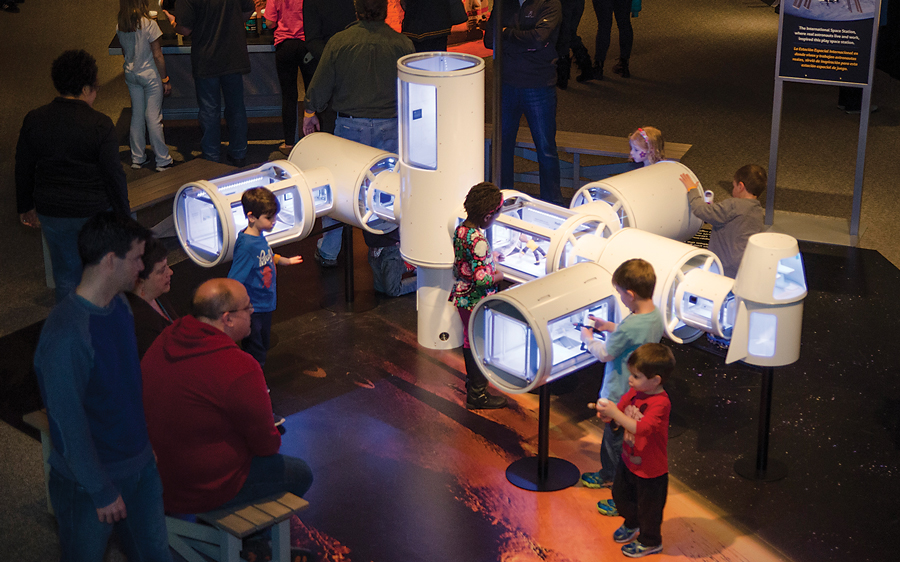
One of the highlights of the Science Museum exhibit is the replica of a piece of the International Space Station that rotates around you, giving guests the sensation of movement. The exhibit will be complemented by a new film called Astronaut: Ocean to Orbit, which reveals the high-tech ways NASA uses underwater environments to mimic life and work in space.
Space: An Out-of-Gravity Experience was a natural fit for the Science Museum because of the museum’s commitment to showcasing space in The Dome.
“That is how you get the true awe in awesome, sitting under these images blown up to nearly a quarter of an acre,” says Bartel about the images from the James Webb Space Telescope, the largest optical telescope in space.
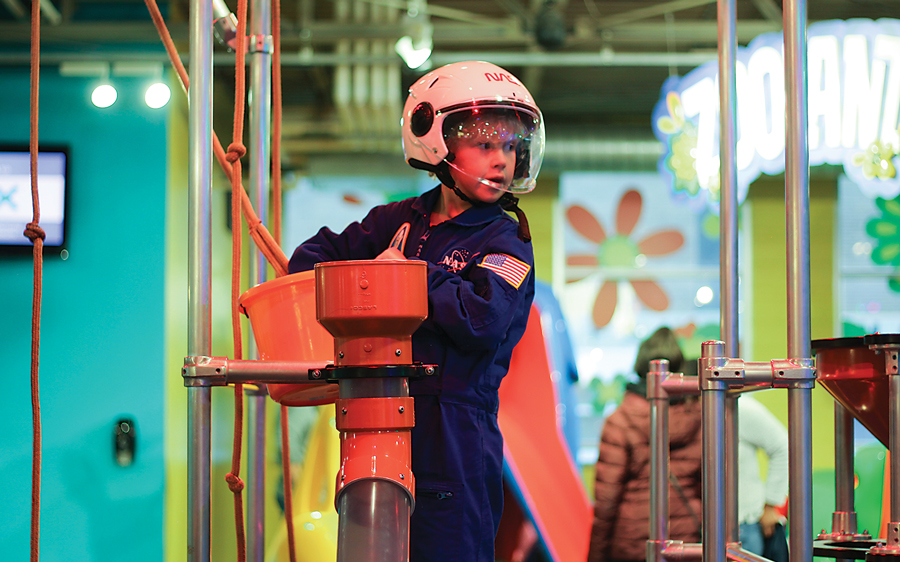
Moon to Mars
Children’s Museum of Richmond
In all of its offerings, as well as its new exhibit Moon to Mars, CMoR strives to inspire children to be innovative and reach for the stars.
“All of our exhibits are very hands-on, interactive, and immersive,” says Sarah Moseley, director of development and marketing for CMoR.
Moon to Mars, which opens May 16 and will be on display through August 13, focuses on the future of space travel and NASA’s Artemis mission. “It will talk about how it is helping us discover more about the Moon and how that is helping astronauts travel to Mars,” Moseley says.

With an expansive footprint in CMoR’s downtown location, the exhibit extends from the special exhibit space at the front of the building into the lobby and then into another exhibit space. Moon to Mars highlights the fact that science and exploration require a diverse team, and that diversity fuels innovation. It also provides an important way for the museum to include STEM education for younger children in its exhibits.
“We are able to incorporate a really important pathway to learning for our audience that we don’t offer,” Moseley says. “We are excited about bringing in something so special and unique.”
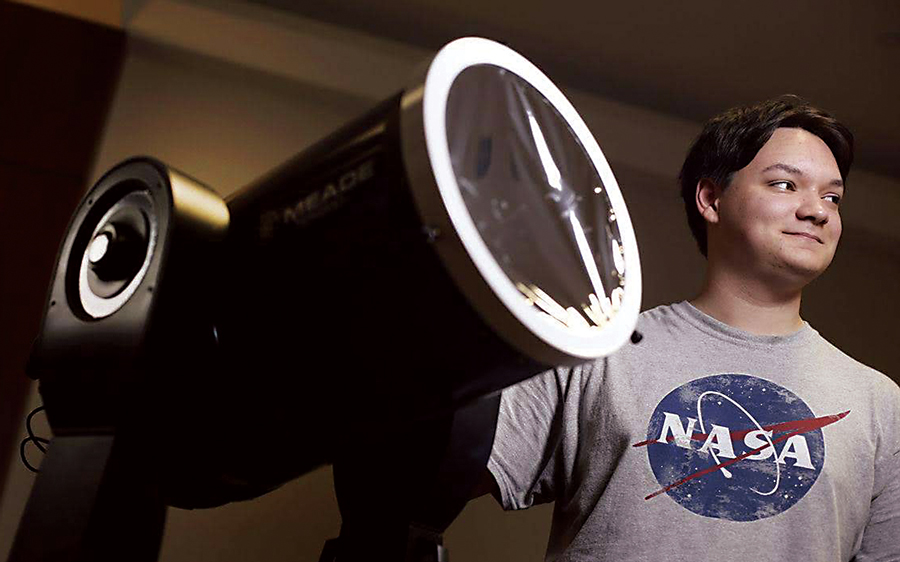
Boy Meets Sky! Tyler Hutchison
“At the end of a long day, it’s so nice to go outside and look around with binoculars just to remind myself that no matter what’s going on in my life, there is a lot more out there, and the universe will go on no matter what,” says Tyler Hutchison, a senior at William & Mary majoring in engineering physics and applied design who has accepted a job as an electrical engineer on the NASA Sounding Rocket Operations Contract team at NASA Wallops Island following graduation.
Tyler, a graduate of St. Christopher’s School, fell in love with space in middle school when he figured out how to take pictures of the stars and planets.
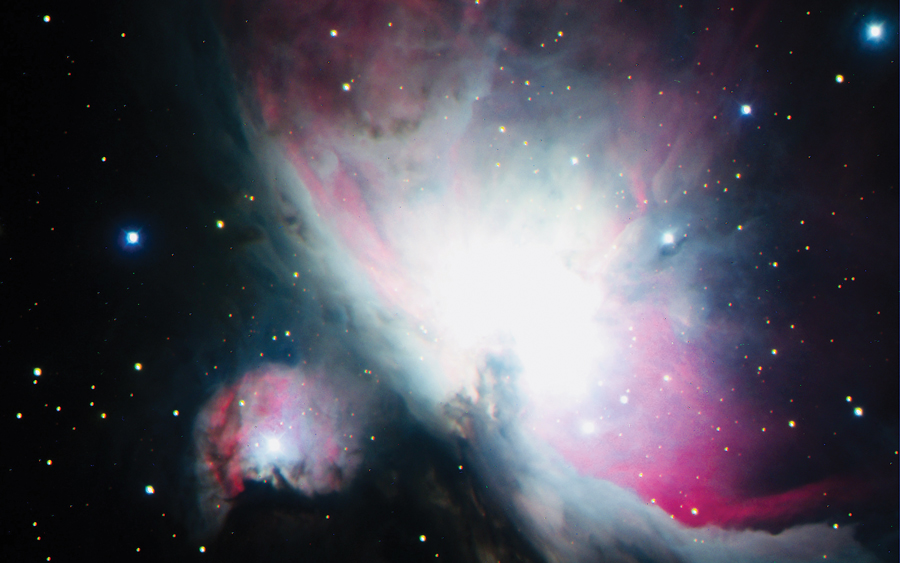
“I had been a photography kid for years by that point, and integrating those two things was the spark that really got me into it full time,” he says.
It turns out that Tyler was a natural, says his mom Angie.
He began to win local and regional awards, as well as national awards through the National Astronomy League.
“We’ve planned our vacations around space,” his mom says. “We chased totality during the Great American Eclipse – and found it! We’ve toured numerous NASA facilities and met multiple astronauts, astronomy authors, and toured any space museum we can find. We’ve attended countless star watches in cold dark fields, participated in astronomy outreach, and hosted Astronomy Day at the Science Museum of Virginia.”
Tyler got interested in astrophotography in 2015.
“My favorite thing about photographing the stars actually has to do with physics. Because the speed of light is not instantaneously fast, the light that you see from stars is actually ‘old’ light,” he says. “When you look at distant galaxies, the light you’re seeing is actually millions of years old, and astrophotography gives you the chance to capture some of that ancient light.”
Summer of Space in Richmond, Va
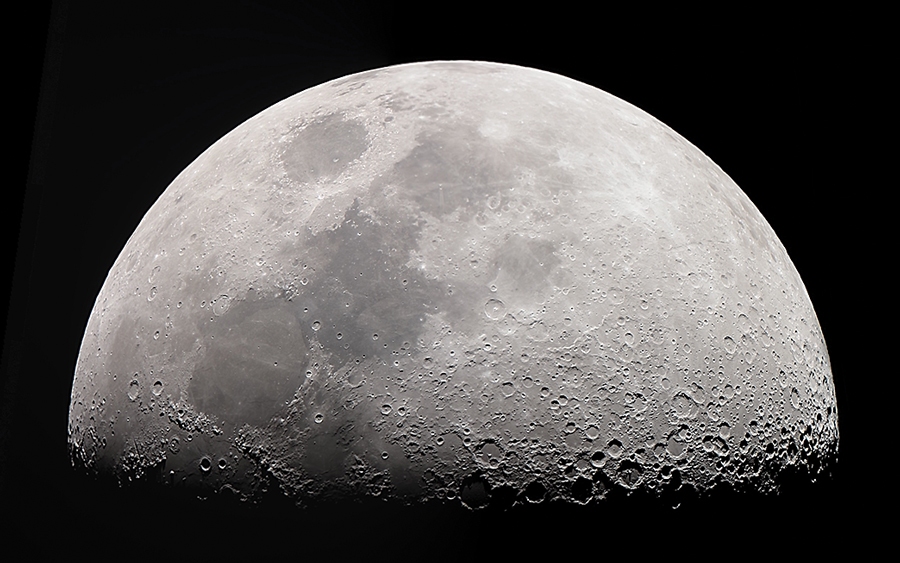
The actual experience of astrophotography is very relaxing for Tyler. “But talking about it and sharing it with people can be just as exciting. Helping somebody look at the rings of Saturn or lunar craters through a telescope for the first time is also a tremendously rewarding experience, and it gives me the chance to look at things with fresh eyes as well,” he says.
Tyler believes kids should take the opportunity to learn about space not only because it’s awe-inspiring but also because it opens up a variety of career opportunities.
“Without consistent engagement with astronomy organizations, research projects, and summer programs throughout high school and college, I would never have gotten to the point I’m at now,” he says.

